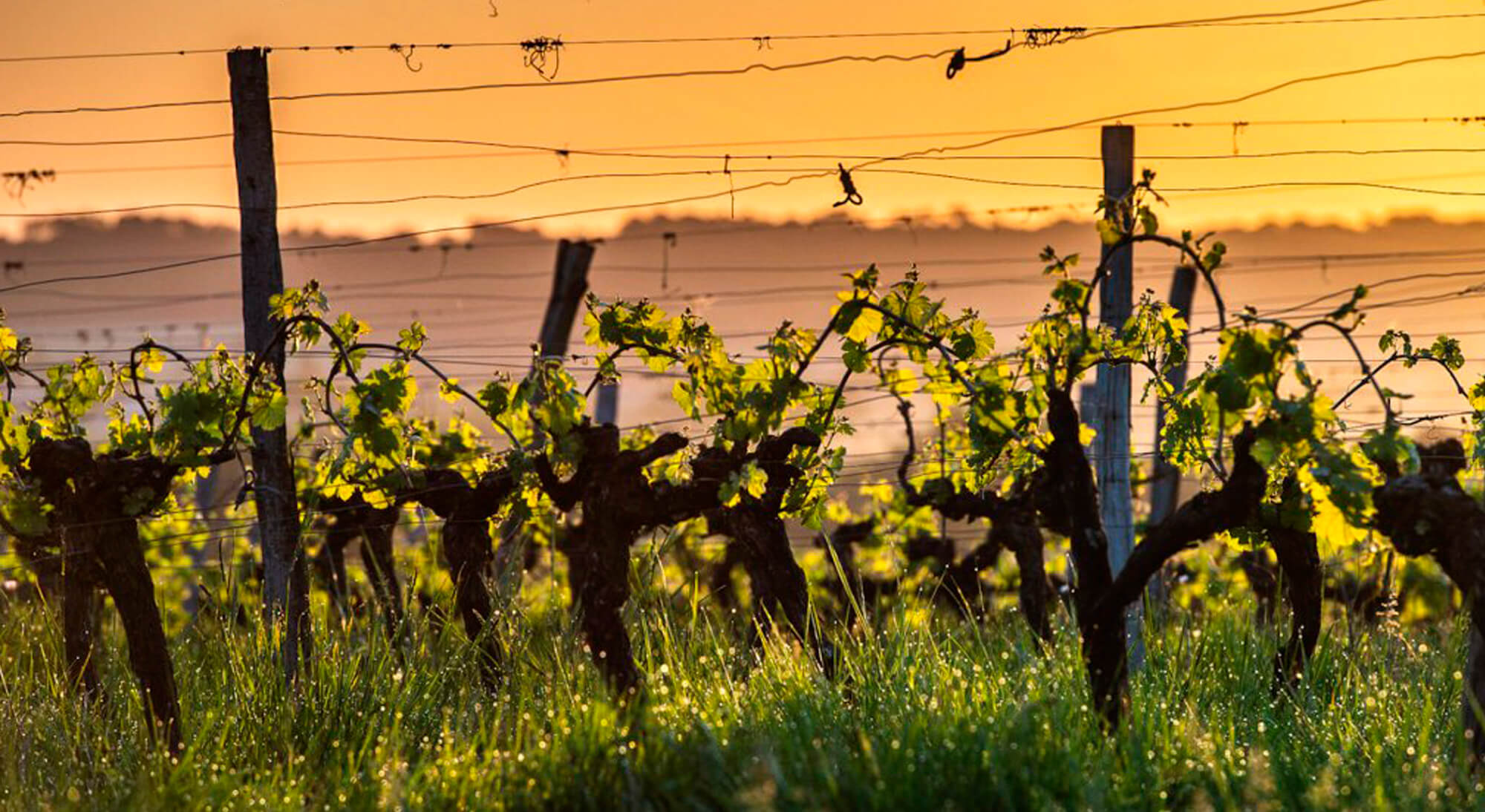The Bordeaux blend, a response to the challenges of climate change.
Situated on the 45th parallel and on the Atlantic coast, Bordeaux traditionally enjoys a moderate maritime climate, with the warming Gulf Stream allowing grapes to ripen well into October. This slow ripening period maintains a fresh acidity in the grapes whilst allowing complex aromas to develop, creating the signature elegance and the propensity to age of the wines of the region.
Bordeaux is a big region, offering a range of terroir and topography. In almost two thousand years of wine production a delicate balance has been established between this terroir, the climate and selected grape varieties. The Bordeaux blend is one of the signatures of Bordeaux.
With the proximately of the Atlantic ocean, producers here are used to managing some climate uncertainty, from spring frosts and seasonal hail to rain at flowering or harvest and hot summers.
In the vineyard, responses to these challenges include plot-by-plot precision viticulture with adapted canopy management techniques, different planting density, cover crops and increasing biodiversity through planting trees and hedgerows. In the cellars, following strict selection of grapes at and after harvest, wine making and extraction techniques are adapted to these individual plots. Wine makers have lots of tools in their kit to produce healthy ripe grapes and wines with more aromatic complexity. These tools that will be even more useful with climate change.
This constant interaction with volatile weather means producers are attuned to the changes and evolution in climate. Recent vintages have seen an increase in average temperatures, in climate variability and a change in rainfall, resulting in a more pronounced vintage effect. In the vineyards this translates to a shorter vine growing cycle with earlier ripening and harvesting (approx. 20 days earlier over the past 30 years), an increase in hydric stress, changes in yield, alcohol, acidity and aromas in the finished wine. Although the effects are currently still favourable for the quality of Bordeaux wines, the perspective of the temperature rising 1° or 2°C could have a substantial impact on their style.
Bordeaux is innovating to ensure it can continue to offer consumers the style of Bordeaux wine they are used to: elegant, aromatic and balanced. With over 60 000 jobs dependant on the sector it’s an economic and social as well as environmental challenge.Bordeaux has had a proactive rather than reactive response to these challenges. The CIVB (Conseil Interprofessional de Bordeaux or Bordeaux Wine Council) is investing €1.2m annually in on-going research by 200 researchers in over 20 public laboratories.
Perhaps the most newsworthy innovation has been adapting plant material.
Traditionally AOC wines in Bordeaux were limited to six main red grape varieties and up to eight white grape varieties, already offering growers a catalogue of grape varieties with different growing cycles and ripeness spread over time.
Blending is a useful tool, not only for the complexity that it brings to the finished wine, but also as a way to manage the variability of the climate from one year to another; the famous vintage effect. Blending from this selection allows winemakers to diversify their varietal mix to subtly mitigate the effects of climate change. For example Merlot, which represents 66% of Bordeaux vineyards in red varieties, is early-ripening, currently giving quality wines across the region, but with the shorter and warmer future growing seasons may struggle to reach its ideal window of ripeness. With changes in knowledge and in the climate, older grape varieties, previously more difficult to grow, are making a come back. Petit Verdot, for example, is a later ripening red grape, so benefitting from increased temperatures. In 2000 it was planted on just 375 hectares, by 2019 a 212% increase brought it to 1174 hectares. It brings colour, acidity, elegant tannins and liquorice and violet aromas to the blend. Adapting to the climate and adding complexity, it’s a win-win.
Bordeaux was the first French vineyard to include new grape varieties into its AOC specifications. In June 2019, the Bordeaux and Bordeaux Supérieur AOC winegrowers adopted a list of new grape varieties for the purpose of adaptation to climate change.
The six ‘new’ grape varieties include four red grape varieties: Arinarnoa, Castets, Marselan and Touriga Nacional and two white grape varieties: Alvarinho and Liliorila. As this is still experimental, to retain the AOC growers are limited to planting just 5% of their vineyards with these grape varieties and they must represent no more than 10% of the final blend for each colour. Other research in plant material includes study the effects of global warming of 52 French and foreign grape varieties and 55 different rootstocks, including 30 authorised in France and 25 from abroad. Grown in experimental plots, they are grafted with 5 grape emblematic French varieties (Cabernet Sauvignon, Grenache, Pinot Noir, Syrah, Ugni Blanc).
Watch this space, Bordeaux blends are on the move.

